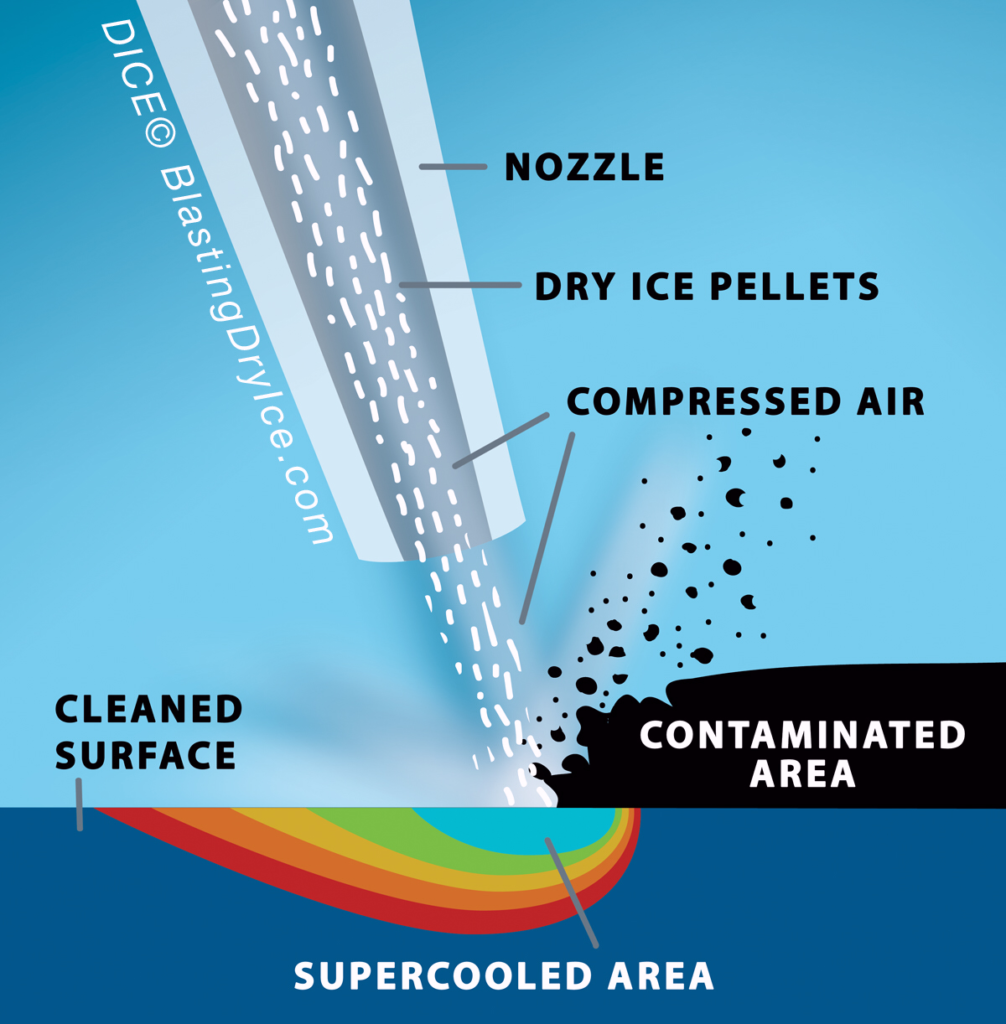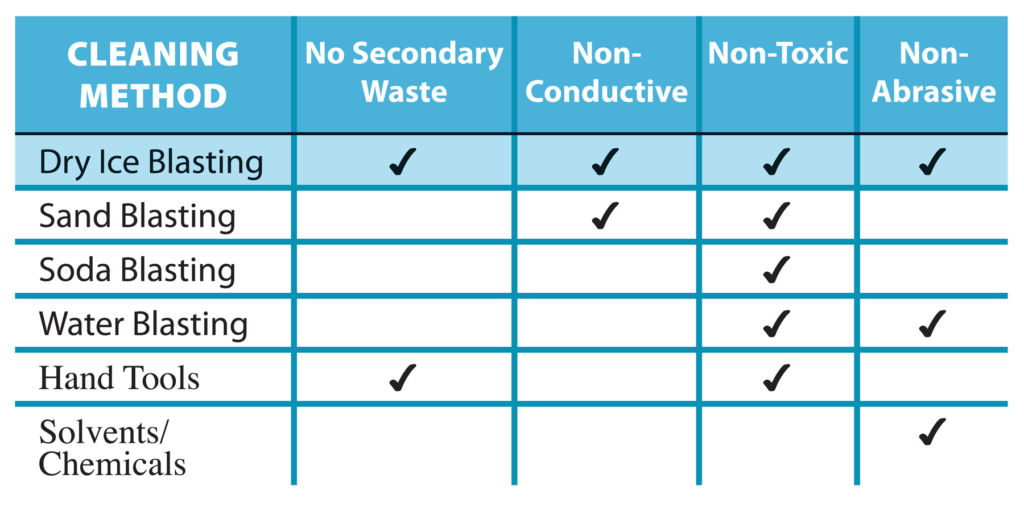Process


Tough enough to handle the dirtiest grime, yet gentle enough to restore irreplaceable artifacts. Blasted onto any surface, and it disappears on contact, making anything being cleaned, stripped, or sanitized like it was never there.
Solid CO2 (Dry Ice) pellets are put into a system similar to a sandblaster and propelled at rates of 600-1000 fps. As it strikes a solid surface, it sublimates directly into a gas. No evaporation process; it’s merely solid to gas!
The frigid temperature (-109F) of the dry ice blasting against the grime or coating causes it to shrink and lose adhesion from its sub-surface. As this happens, the dry ice explodes into vapor expanding 800 times its original volume helping remove contaminants.
Dry Ice Blasting is a form of carbon dioxide cleaning
Dry ice, the solid form of carbon dioxide
- is accelerated in a pressurized air stream
- directed at a surface in order to clean it.
Dry ice blasting is
- nonabrasive
- non-conductive
- nonflammable
- non-toxic
The method is similar to other forms of media blasting such as sand blasting, plastic bead blasting, or sodablasting in that it cleans surfaces using a media accelerated in a pressurized air stream, but dry ice blasting uses dry ice as the blasting medium. Dry ice blasting is nonabrasive, non-conductive, nonflammable, and non-toxic.
Dry ice blasting is an efficient cleaning method. Dry ice is made of reclaimed carbon dioxide that is produced from other industrial processes and is an approved media by the EPA, FDA, and USDA. It also reduces or eliminates employee exposure to the use of chemical cleaning agents.
Compared to other media blasting methods, dry ice blasting does not create secondary waste or chemical residues as dry ice sublimates, or converts back to a gaseous state, when it hits the surface that is being cleaned. Dry ice blasting does not require the clean-up of a blasting medium. The waste products, which includes just the dislodged media, can be swept up, vacuumed, or washed away depending on the containment.
References from Wikipedia.
Dry ice blasting propels pellets at extremely high speeds. Dry ice pellets are quite soft and much less dense than other media used in blast cleaning, such as sand or plastic pellets.
Upon impact, the pellet sublimates almost immediately, transferring minimal kinetic energy to the surface on impact and producing minimal abrasion. The sublimation process absorbs a large volume of heat from the surface, creating shear stresses due to thermal shock, which improves cleaning as the top layer of dirt or contaminant transfers more heat than the underlying substrate and flakes off efficiently.
The rapid change in state from a solid to gas causes microscopic shock waves to remove the contaminant.
References from Wikipedia.
Dry ice blasting can clean numerous objects with differing, complex geometries at once. Cleaning plastic and rubber is a leading application for the technology. Dry ice replaces traditional cleaning methods that rely on manual scrubbing and chemical cleaning agents and cleans items in-place.
It cleans some equipment without disassembly and without producing fire or electrical hazards. The EPA recommends dry ice blasting as an alternative to many types of solvent-based cleaning.
The unique properties of dry ice make it an ideal cleaning solution in many commercial and manufacturing settings.
And is used in disaster remediation, historic item preservation, semiconductor fabrication, metalworking, food processing industry, and more.
References from Wikipedia.
Dry ice does not create or add carbon dioxide (CO2) to the atmosphere because the dry ice is made from reclaimed CO2.
Dry ice is made from liquid carbon dioxide, a by-product of other industrial processes.
No secondary waste, clean-up, or special disposal is needed.
Approved by the EPA, FDA, and USDA.
We love the work DICE does!
We love the work DICE does!
